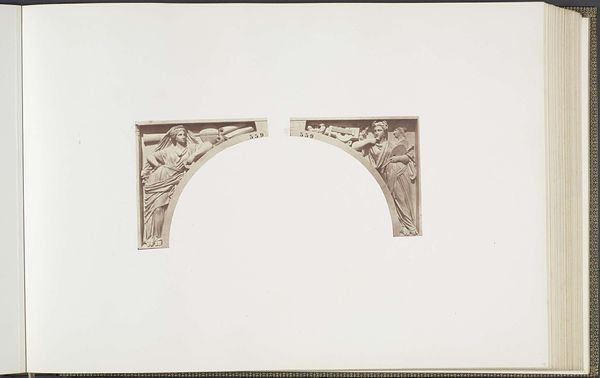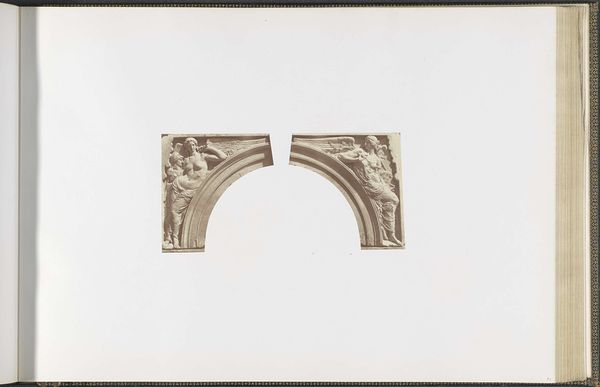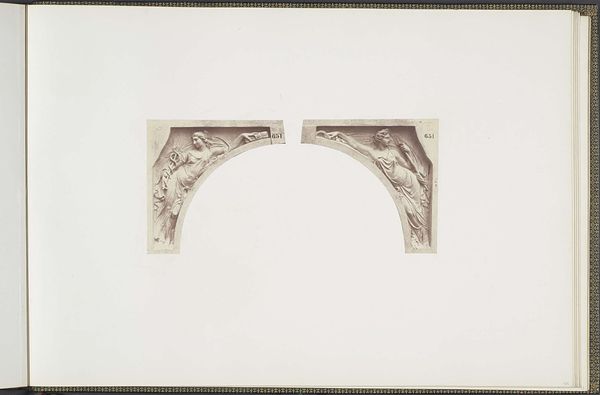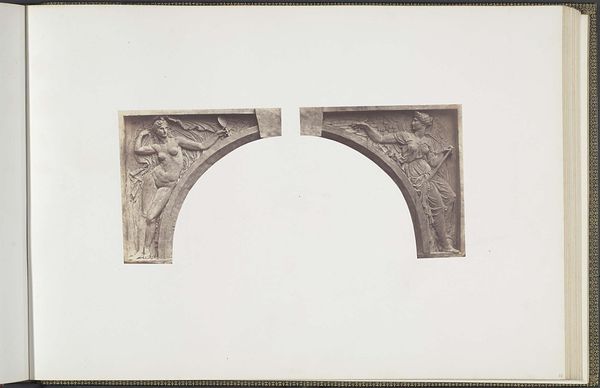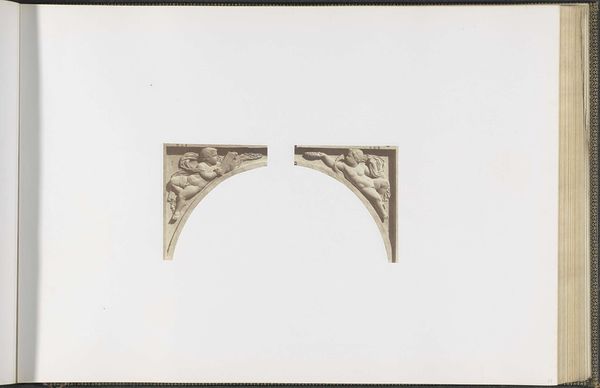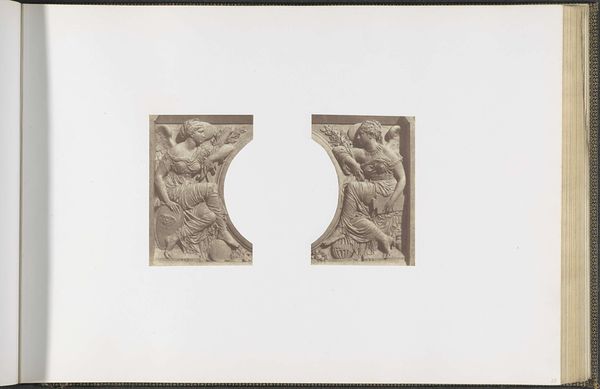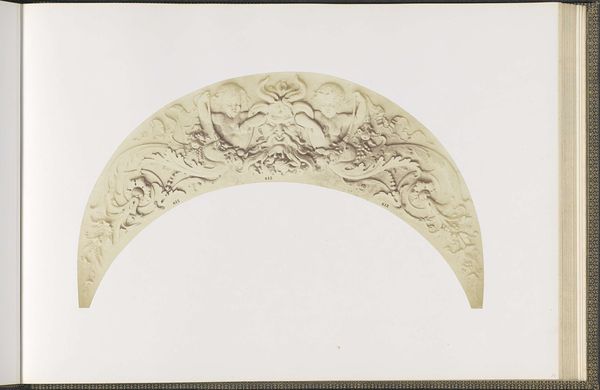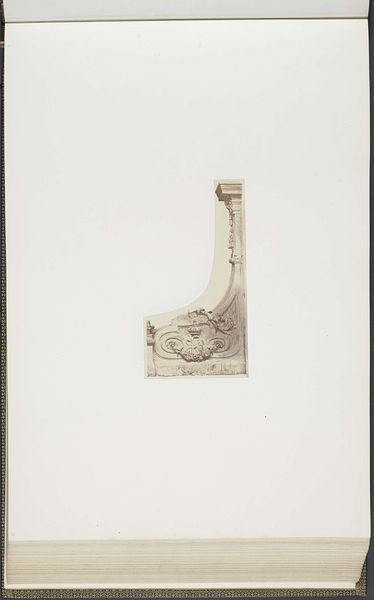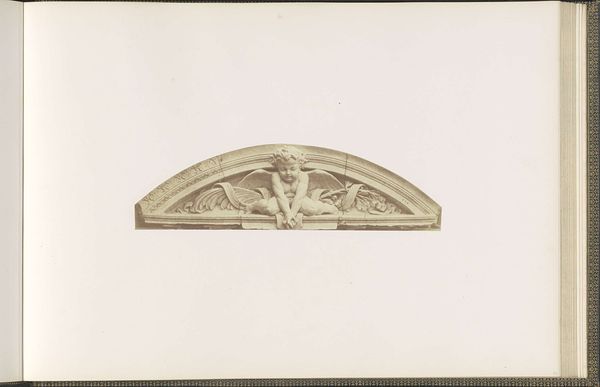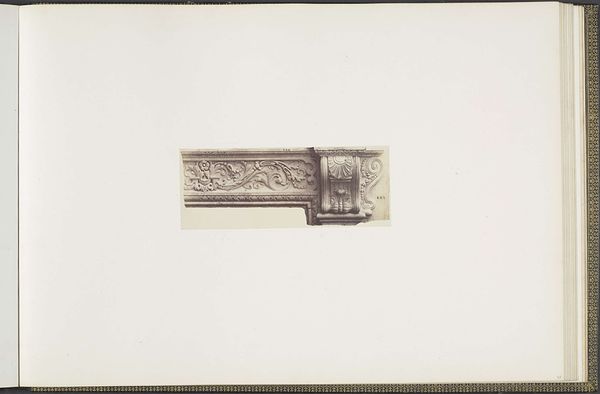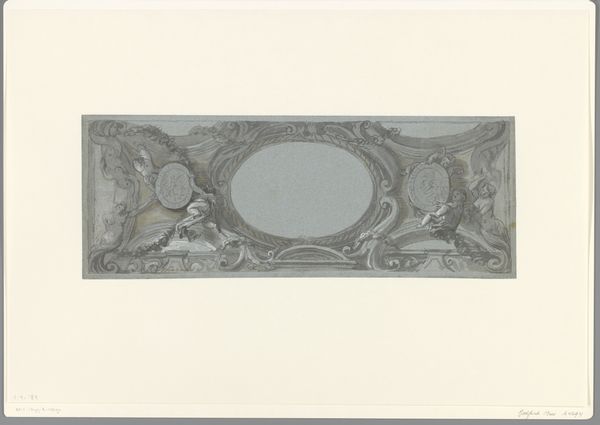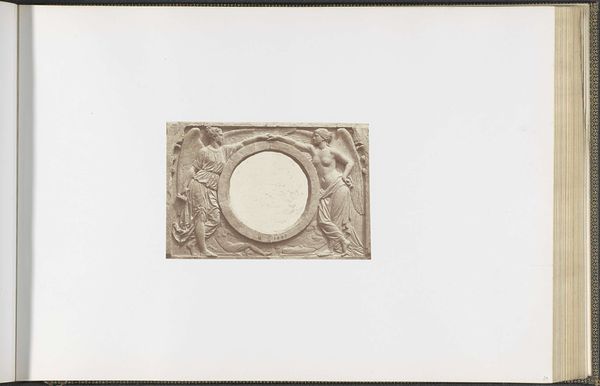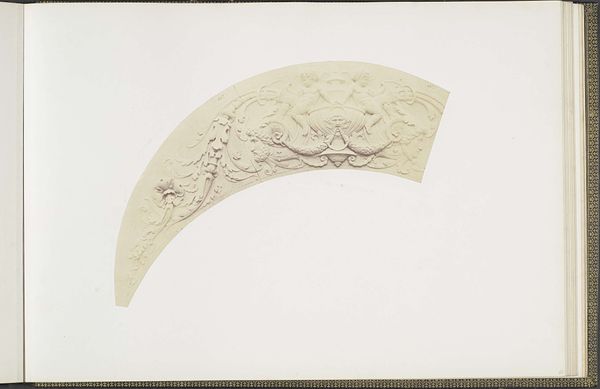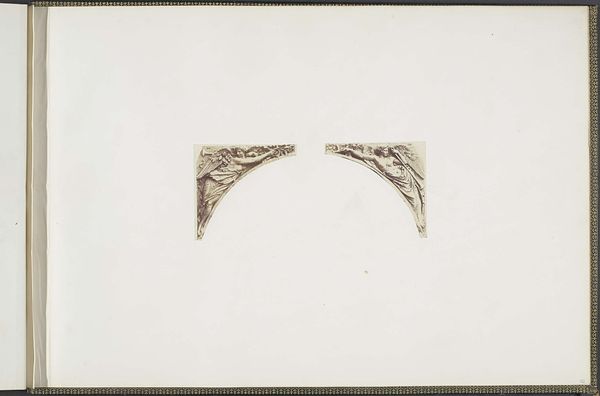
Gipsmodellen voor beeldhouwwerken op het Palais du Louvre: links "La Science moderne" en rechts "L'Art" door Emile Seurre c. 1855 - 1857
0:00
0:00
edouardbaldus
Rijksmuseum
print, photography, sculpture
#
portrait
#
neoclacissism
# print
#
landscape
#
classical-realism
#
photography
#
sculpture
#
cityscape
#
academic-art
Dimensions: height 382 mm, width 560 mm
Copyright: Rijks Museum: Open Domain
Editor: So this is Edouard Baldus’s photograph of the plaster models for sculptures on the Palais du Louvre, "La Science moderne" and "L'Art" by Emile Seurre, dating from around 1855 to 1857. They're so striking; they evoke the ideals of classical antiquity with their draped figures, but they’re also incredibly formal. What do you see in these figures, in terms of the symbols and imagery they use? Curator: I see a carefully constructed dialogue between allegorical figures that embody, not just visually, but conceptually, "modern science" and "art." Consider how these sculpted figures were destined to adorn the Louvre, a space already laden with historical and artistic significance. Do you see how wings signify inspiration and creative imagination. In "modern science" the putto appears to be studying the starts with navigational instruments, indicating empiricism and rational progress in society during the Second Empire, whilst "art" holds symbolic painting tools as she reflects in melancholy. What does this cultural continuity say? Editor: It is interesting to notice that dichotomy between rational, modern progress and artistic practice within cultural institutions of the Second Empire! How are these sculptures informing the architectural space? Curator: The sculptures' presence becomes a statement about the Louvre's own identity. They aren’t merely decorative elements, but rather visual embodiments of the values the institution seeks to uphold. Notice how "Art" almost melds into the space, like another component of the archive. Baldus' photograph, then, doesn’t simply document artwork. It also speaks volumes about cultural memory and how society consciously projects its values through art. What will the future learn about the past through these symbols? Editor: It really prompts us to question how symbols change over time! Now I understand better what the Second Empire wanted to immortalize in those sculptures. Curator: And the very act of photographing them freezes a moment of interpretation, inviting future generations to continue the dialogue.
Comments
No comments
Be the first to comment and join the conversation on the ultimate creative platform.
